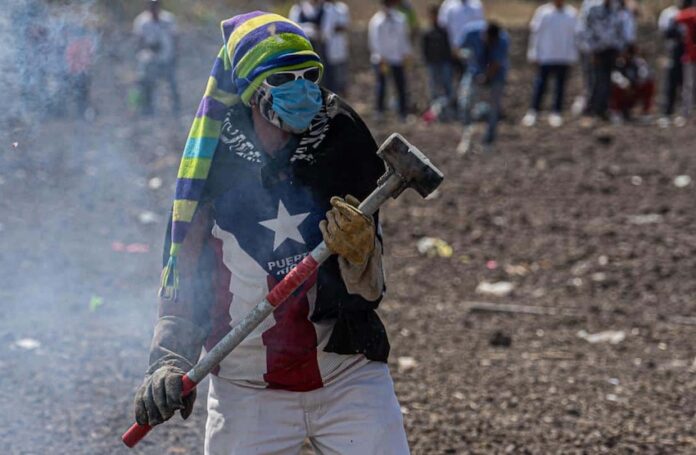All over the world, people celebrate special occasions with festivals. While most of them have a unique element of attraction, there’s one festival in the Bajío of central Mexico that may be the most extraordinary of all: the Exploding Hammer Festival.
Called the Festival del Martillo Explosivo in Spanish, this festivity stands out for the practice of hitting the ground with 30-kilogram hammers to detonate an explosive device. It has been taking place for centuries in the small community of San Juan de la Vega, near Celaya, Guanajuato.

The birth of the Exploding Hammer Festival
Despite being centuries old, the festival is barely known outside of Celaya, as authorities have tried to forbid it due to its risky nature. Last year, regional newspaper El Sol Del Bajío reported 43 people, including four children, severely injured by the explosions.
This somewhat violent festival honors the community’s patron, Juan Aquino de la Vega, fondly called San Juanito. It re-enacts a 17th-century skirmish between Aquino de la Vega, a wealthy miner, and some bandits who stole his gold. Another version of the story says that de la Vega was himself a bandit and kind of local Robin Hood who stole from rich miners, redistributing their gold among the poor.
As a faithful devotee of Saint John the Baptist, the legend goes, de la Vega promised to organize a festival every year in his honor for the miracle of recovering his gold. Although de la Vega is a folk saint and not recognized by the Catholic Church, he’s considered the town’s patron and highest deity.
The violent re-enactment of a battle
The Exploding Hammer Festival takes place on Shrove Tuesday, the last day of the Carnival period in the Christian liturgical calendar. It sees male participants split into two sides: the ladrones, or bandits, and the arrieros, the muleteers fighting for Aquino. Each side takes turns blowing up the hammers at the local soccer field.
The hammers are fitted with homemade explosives made of potassium chlorate and sulfur, which are hit against stones or iron plates, causing a deafening explosion that’s the highlight of the event.
“The part of the ‘thunderbolt’ is visually impressive,” Mexican movie director Santiago Maza Stern told newspaper Sin Embargo regarding his 2019 documentary “Los Truenos de San Juan.”
“The smell of gunpowder, the sound of each explosion, the columns of smoke that rise from each thunder are very striking,” he said.
The festival, which continues for five days with other activities, also involves theatrical productions at dawn re-enacting episodes from the town’s history, like robberies and arrests.
“For me, the carnival is full of magical moments,” Maza told Sin Embargo.
Banned by authorities
Despite the magic the festival evokes in many, authorities attempt to halt the practice every year as it has been illegal since 2000. But they’ve been unsuccessful every time.
As shown in the documentary, participants smuggle gunpowder into the town and secretly prepare small packets with the explosive mixture before attaching them to the heads of the hammers.
“We’ve always done this, and we will continue to do it,” a participant says in the film. “Fingers fly off, chunks of flesh fly off, we get burns. Still, we have to blast.”
With reports from Sin Embargo
